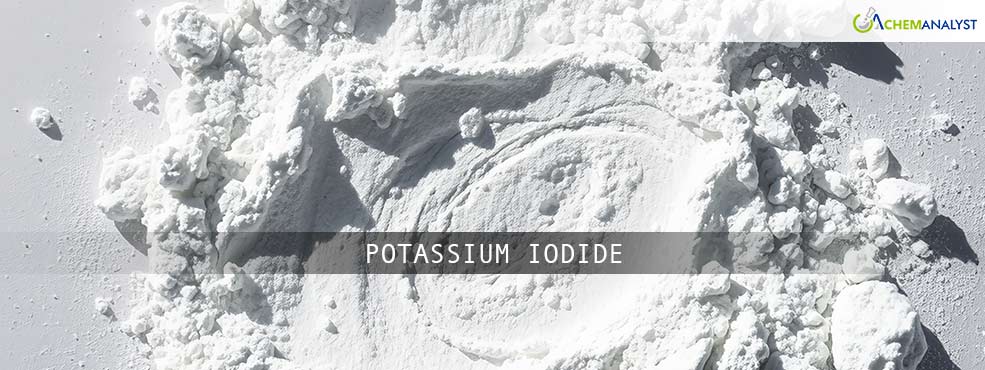Potassium Iodide Prices Continue Upward Trend Amid Supply Constraints and Trade Policies
- 06-Mar-2025 12:00 PM
- Journalist: Patrick Knight
According to ChemAnalyst, Potassium Iodide has seen a consistent rise in price after a dramatic dip in the last month of 2024. The market expected to continue this growth in March 2025 due to several reasons. Potassium Iodide widely applied in medicine, protection against radiation, and medical treatment. It has its vital application in shielding the thyroid from exposure to radioactive iodine and plays a vital role in treatments of iodine deficiency.
Key Takeaways
-
Potassium Iodide prices are rising after a sharp drop in late 2024, with continued growth expected into March 2025.
-
Strong demand of Potassium Iodide from pharmaceutical and nutraceutical sectors is driving the price increase, supported by steady exports.
-
Production slowdown, reflected in a declining PMI, is adding upward pressure on prices.
-
The 10% U.S. tariff on Chinese imports is disrupting supply chains and increasing costs in the U.S. market.
-
Falling freight costs from China to the U.S. have not offset the price hikes caused by tariffs.
The expected slow-on-set price increase of Potassium Iodide is due to robust demand from the downstream sectors, the pharmaceutical and nutraceutical markets. Also, exports are likely to sustain their price drive in March due to continued demand from domestic as well as Western markets. Still, supply-side bottlenecks and macroeconomic factors are also forcing the prices upwards for Potassium Iodide.
Seasonally adjusted Purchasing Managers' Index (PMI) went down from 50.5 in December to 50.1 in January, showing a deceleration in production. This lower output will in turn put further upward pressure on prices of Potassium Iodide in the months ahead. Industry observers also point towards inflationary pressures in the U.S. and China as key drivers of increasing costs, with rising costs of raw materials and production further fueling price increases.
In addition, U.S. President Donald Trump's 10% tariff on every Chinese import that was enacted on February 4, 2025, will significantly affect the Potassium Iodide price. The United States pharmaceutical industry, which spent more than $176 billion for pharmaceutical goods imports in 2023—around $6 billion of which were imported from China—is now put at a disadvantage because of tariffs. This policy change will continue to rattle supply chains and continue to drive Potassium Iodide prices higher in the U.S. market.
While freight from China to the U.S. has been decreasing steadily, they have not yet managed to nullify the price hikes due to tariff charges, ChemAnalyst reports. The ongoing cost pressures indicate that Potassium Iodide prices are likely to continue being high in the near term.
While the global Potassium Iodide market is trying to cope with regulatory shifts, increasing production expense, and changes in trade policy, players will need to modify by diversifying procurement strategies and signing long-term deals. All these are to be done so that risks attached to market instability are reduced, while supply continuity is maintained amidst a more sophisticated economic environment.



